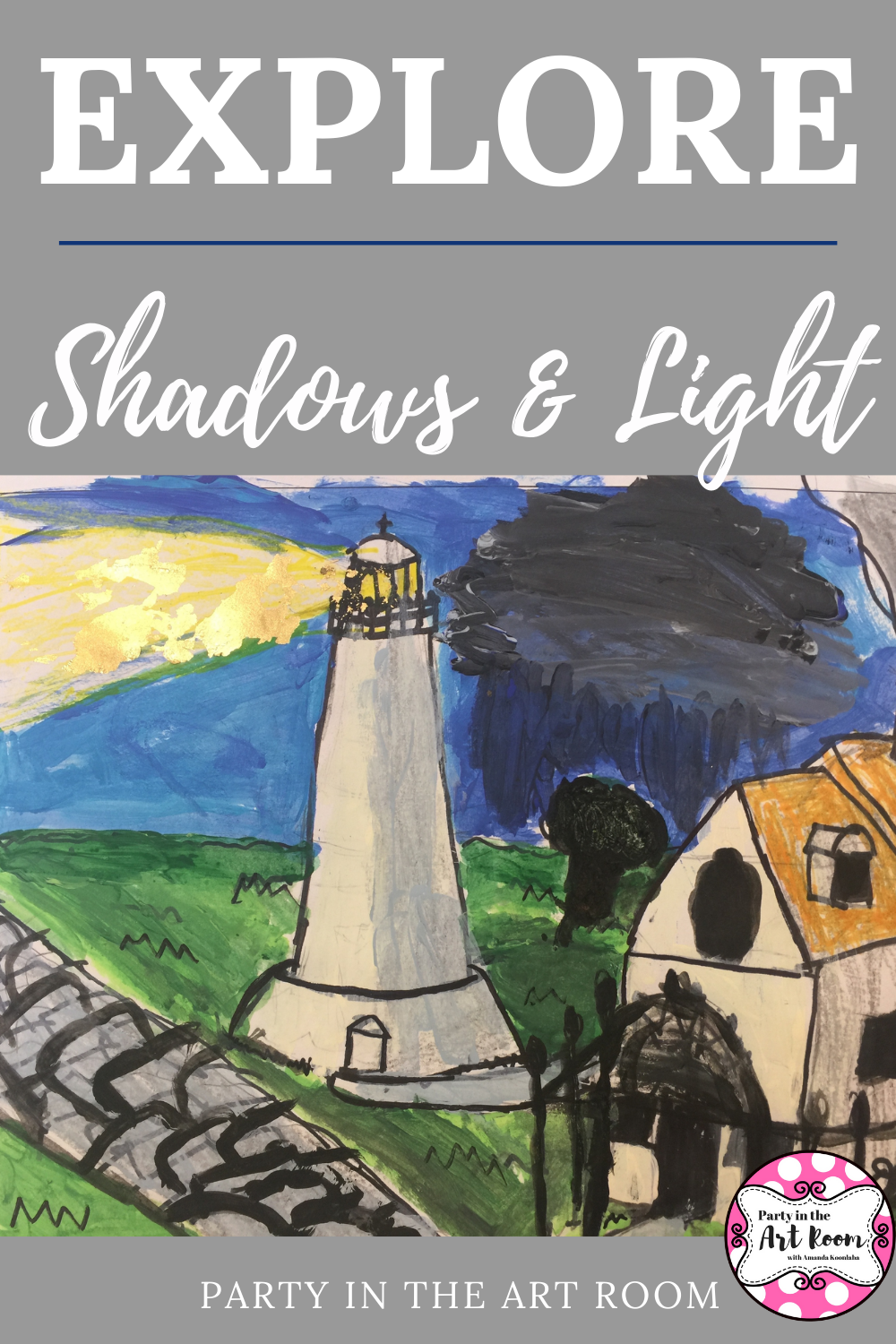Explore Shadows and Light
Between 1927 and 1930, Edward Hopper painted two landscapes. These landscapes featured the Two Lights lighthouse in Cape Elizabeth, Maine. His play of sunlight and shadow across the buildings offered rich formal possibilities. For this art teacher, I saw the possibilities of offering my 5th grade art students a lesson they would remember.
Behind the Art
In order to prepare for this lesson it was important to draw from the art itself. Edward Hopper used a brilliant blue sky and strong contrast between light and dark. Beyond that, he used oil on canvas which is a popular material and technique.
Another driving force behind his art is the classic perspective without theatrics. This gives his paintings a sense of realness that one can identify with. Hopper’s lighthouse drawing symbolized the solitary individual stoically facing the onslaught of change in an industrial society.
Exploring Shadows & Light
Light and shadows visually define objects. Before you can draw the light and shadows you see, you need to train your eyes to see like an artist. Artists use values to translate the light and shadows they see into shading, ultimately creating the illusion of a third dimension.
Looking at Hopper’s lighthouses, you can guide students on a conversation about:
Light source: The direction from which a dominant light originates. The placement of this light source affects every aspect of a drawing.
Shadows: The areas on an object that receive little or no light.
Cast shadow: The dark area on an adjacent surface where the light is blocked by the solid object.
Then, these conversations can be turned into an activity where they create their own lighthouse drawings and paintings.
The Project
To use this as a lesson in your art class, you’ll need the following supplies:
Paper to paint on
Tempera
Acrylic
Crayons
Oil pastels
Directions:
Start the lesson with showing the students Edward Hopper’s lighthouse paintings.
Have dialogue about his work along with a show-and-tell of how to recreate a painting of their own.
Lead your students in drawing several practice versions.
Give them freedom to depict and draw to the best of their ability.
Have the students draw their final one on the official paper, painted with acrylic, tempera, and oil pastels.
These combinations will help them achieve a look that shows shadows and light. The idea isn’t to reach for perfect depiction more than allowing them to explore shadows and light using Edward Hopper lighthouses.

